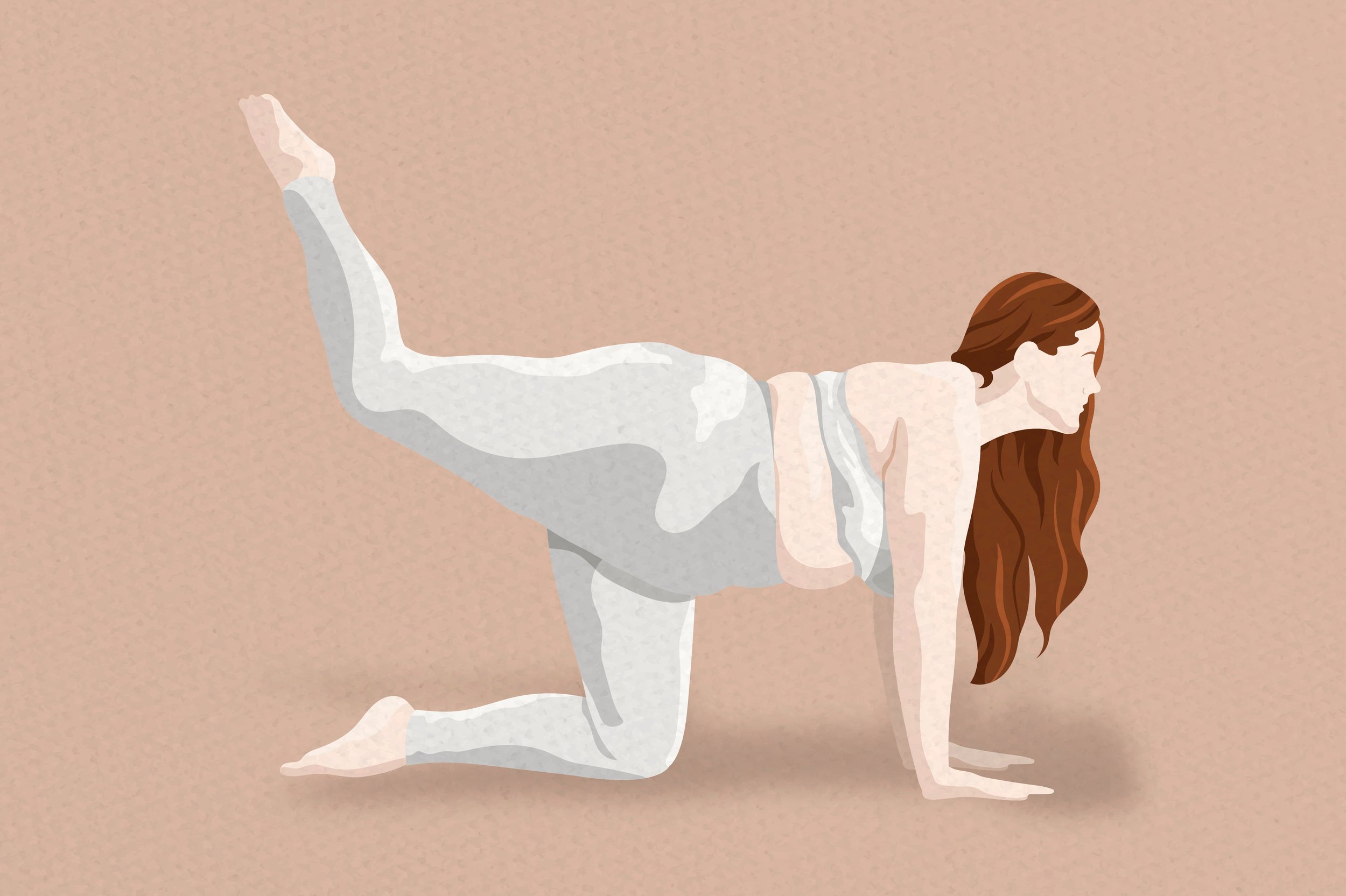Let’s Talk About Recovery Yoga
I love yoga. I’m all here for it. Comfy clothes, gentle poses. I love me a good happy baby, not concerned with my looks. I’ll let you decide what’s best for your movement regimen, but I want to talk about yoga discourse in eating disorder recovery.
We already know the spiritual and stress-reducing aspects of yoga. Those moments when you're on the mat, listening to your body, learning how to bend and breathe and move in ways you never would have tried. Holding crow, attempting handstands, and rocking out in half moon all require focus on balancing and nothing else.
Stress dissipates; thoughts about to-do lists and the news flit out of mind for this brief reprieve.
I’ve read articles, seen Instagrams, and consumed plenty of content about whether or not to exercise in recovery. I searched and later wrote my own articles on how to handle body changes and what happens after achieving remission. Many of us with eating disorders crave control and use compulsive behaviors to find reprieve (however briefly) from the illness. Seeing proof that I wasn’t alone and that recovery would get better if I kept going helped alleviate my anxiety about my newfound lack of control.
Recovery Instagrams misled me into thinking that yoga didn’t count as exercise, not really, so I told myself it must be okay to do every day. During the eating disorder, yoga didn’t seem like a vigorous enough exercise to constitute a workout. But in recovery, I used that logic to endorse yoga as non-exercise, and therefore allowed myself to practice without restraint. I can’t speak for others in recovery, but in my experience—if it’s still a crutch to compensate for the unavoidable recovery changes, then it does indeed require restraint.
It also triggered some of that eating disorder competitiveness. I compared myself to the filtered photos of sculpted – often slim – bodies holding difficult poses. I’ve been practicing yoga for eight years; I have a strong core and was a competitive athlete in the past. But I definitely can’t do a headstand. My t-shirts didn’t slip down to reveal abs during recovery. No, they showed off my weight restoration bloat. And if I was being honest with myself, I knew I was holding those poses because I secretly wished my abs would return.
Working out to achieve a perceived “intensity” is not compatible with recovered, healthy exercise. I used to think only HIIT or difficult cardio routines that left me breathless “counted.” Forget walks, gardening, and especially yoga. Recovered me knows that isn’t true.
Truthfully, all those activities are healthy movements. Recovered movement can be fun, or social, or soul-nourishing in any way. At least for me, it should never again be about calories or breathlessness or how sore I am. And I do feel sore after plenty of yoga sessions (shoulders, I’m looking at you). And proper rest is essential as well!
But I didn’t want to “do recovery wrong,” and I thought it was comforting to scroll through recovery social media. Ultimately, it was confusing for my relationship with my body image and movement.
Would an expensive new yoga outfit help quiet my eating disorder’s fears about my body during recovery? I don’t own anything branded alo or lulu. Not that I have anything against those who do fit this yoga aesthetic. By all means, please continue your daily practice in your cute matching leggings set. I love yoga too, but this particular look clashed with my recovery aesthetic and consumer habits. I didn’t feel comfortable spending money on new clothes when it felt like my body was changing sizes every other day. My recovery came with over a year of fluctuation before entering, overshooting, and eventually re-entering what seems like my set range. I have treated myself to new clothes now that I am in remission, but lulu hasn’t made it into my cart.
Lululemon’s founder publicly stated, “some women’s bodies just don’t work for yoga pants.” No disrespect to Chip Wilson and the business he built, but I didn’t recover to mold myself into a white billionaire’s male fantasy of what a woman's body should look like. Women’s touching thighs are not the problem. In recovery, I’ve truly embraced the idea that clothes should fit my body, and not the other way around. Yes, sometimes it is fun to practice in my favorite leopard print sports bra. Athleta is a similarly expensive brand, but I’ve always appreciated walking into their stores and seeing various sized mannequins. Diverse size ranges are always in stock, and the company trains their employees according to its bodySTRONG® size inclusivity guidelines. I don’t have very many expensive workout clothes, but I’m happy bringing my business to a corporation that values health at every size.
I usually do yoga on my super old, no brand name mat, alone in my dark basement or sunny backyard. I’m typically wearing the biggest t-shirt in existence, disappearing underneath it, and then regretting it when it hits me in the face for every down dog. It’s wearing my logo-rubbed-off-they’re-so-old leggings. Yes, the pair with the tiny hole on the knee that I refuse to donate. It’s not post-yoga green juices. It’s more whatever-I’m-craving-and-it’s-okay-if-it’s-a-burger meals.
Yoga fuels me. It’s fun to stretch, to focus, to breathe, to learn new positions. As long as I’m keeping yoga silly, I can say I’m in the right balance of post-eating disorder exercise. Letting out a laugh when I trip out of standing splits. Not looking in the mirror and assessing my legs, my stomach. And when I reach the vinyasa in the end, it’s not getting up and hurrying to the next thing. It’s gratitude, because I showed up, did it, and thanked my body for doing what it does best. Getting me through–always.


